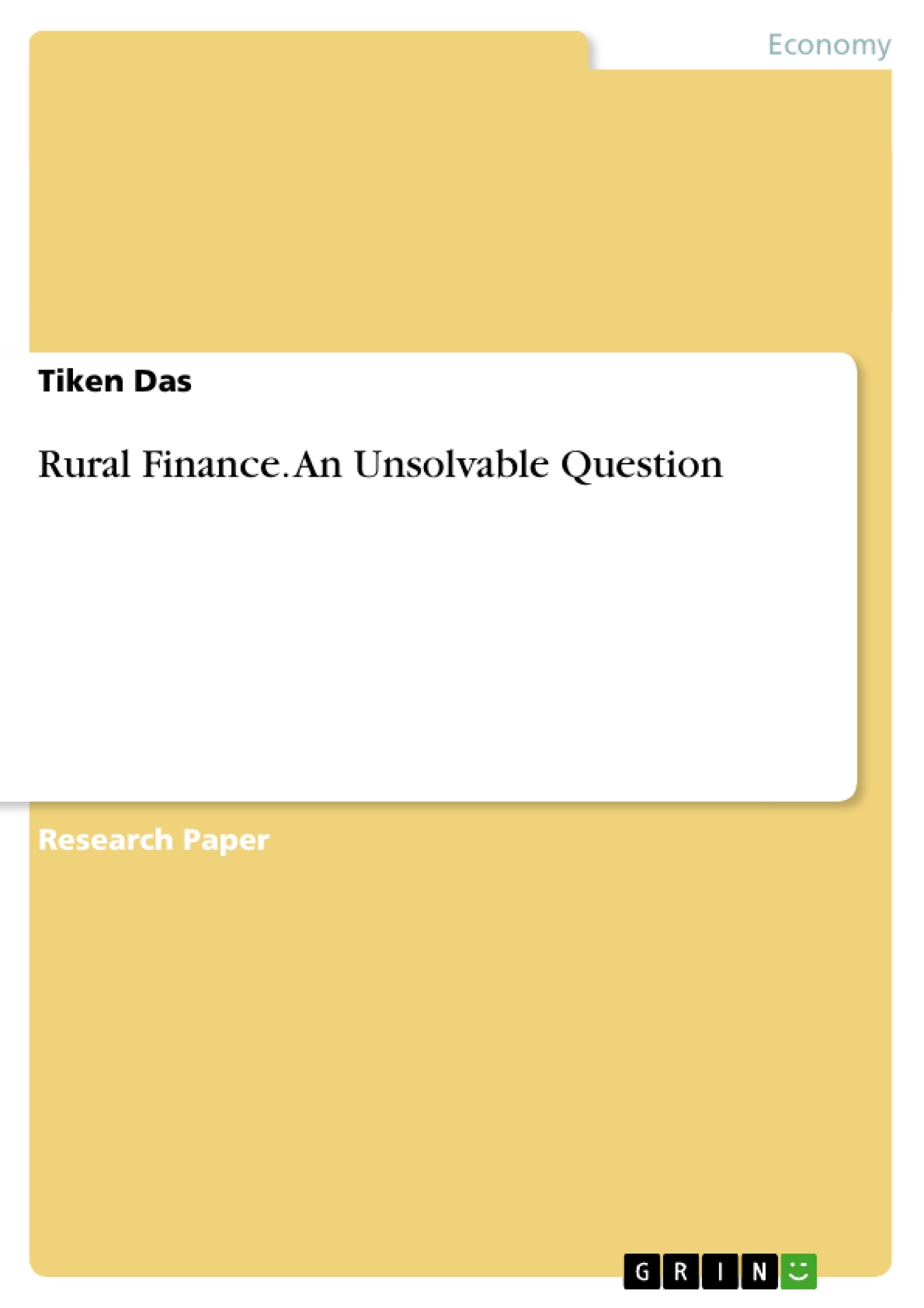Excerpt
Rural Finance- An Unsolvable Question
(Author: Tiken Das)
Abstract: Access to financial markets is important for poor people. Like all economic agents, low-income households and microenterprise can benefit from credit, saving and insurance services. But financial markets, because of their special features, often serve poor people badly, since poor people often have insufficient traditional forms of collateral such as physical assets to offer. Thus the poor generally excluded from the formal financial institutions and have to depend on informal sector. In India, since the early national plans, successive governments have emphasized the link between improving access to finance and reducing poverty. But the vast majority of India’s rural poor still do not have access to either formal finance or microfinance. It was found that credit cooperatives, commercial banks, and other formal financial sector programs in rural areas have not displaced informal sources of credit, altogether. It is assessed that the share of rural informal credit in total outstanding debt has been certainly decreasing over the period from 1950 to 2002 with various financial initiatives of the RBI and legislation of the various state government to regulate moneylenders. However, about two-fifth of the rural household’s dependence on informal credit, even today, indicates further scope for financial inclusion in rural areas. According to author financial awareness has to be spread amongst the excluded masses that are illiterate and poor. Financial inclusion and financial literacy are two sides of the equation. Financial inclusion acts from supply side by providing financial markets/services that people demand whereas financial literacy stimulates the demand side by making people aware of what they can demand.
1.1. Introduction
Access to financial markets is important for poor people. Like all economic agents, low-income households and microenterprise can benefit from credit, saving and insurance services. Such services help to manage risk and to smooth consumption and allow people to take advantage of profitable business opportunities and increase their earnings potential. But financial markets, because of their special features, often serve poor people badly, since poor people often have insufficient traditional forms of collateral such as physical assets to offer. They are often excluded from traditional financial markets because transaction costs are often high relative to the small loans typically demanded by poor people. And in areas where population density is low, physical access to banking services can be very difficult. Apart from that, because of the Information Asymmetry the bank faces two types of risk- Voluntary and Involuntary. These risks make the acceptance of collateral necessary for the lenders. In case of those who are living below poverty line, have little or no asset to be provided as collateral. This is the case that makes them excluded from the credit markets. But the case of informal financial institutions is different as they have greater alternatives to accept as collaterals such as labor of the borrowers. Moreover the informal money lenders have somewhat greater information about the clients, as their lending operation generally stipulated local areas. Thus the poor generally excluded from the formal financial institutions and have to depend on informal sector.
In India, since the early national plans, successive governments have emphasized the link between improving access to finance and reducing poverty. The need to improve financial access for India’s poor motivated the establishment of a vast network of rural cooperative credit banks in the 1950s, followed by a drive to nationalize commercial banks, launched in 1969. This created thousands of new bank branches in rural areas across the country. In 1980 subsidized credit programs were attempted, notable examples being the Integrated Rural Development Program (IRDP) in India. For IRDP, repayment rates fell below 60% in 1989 and came down to just 31% by 2001. The 1990s saw the partial deregulation of interest rates, increased competition in the banking sector and new microfinance approaches that combine the safety and reliability of formal finance with the convenience and flexibility of informal finance. Access to finance for the rural poor has improved somewhat over the past decades. But the vast majority of India’s rural poor still do not have access to either formal finance or microfinance. According to Rural Finance Access Survey (2003), 70 percent of marginal/landless farmers do not have a bank account; 87 percent have no access to credit from a formal source. As a result, they are forced to rely on informal finance, mainly from moneylenders who charge exorbitant rates of interest.
- Quote paper
- Tiken Das (Author), 2013, Rural Finance. An Unsolvable Question, Munich, GRIN Verlag, https://www.grin.com/document/231178
Publish now - it's free






















Comments